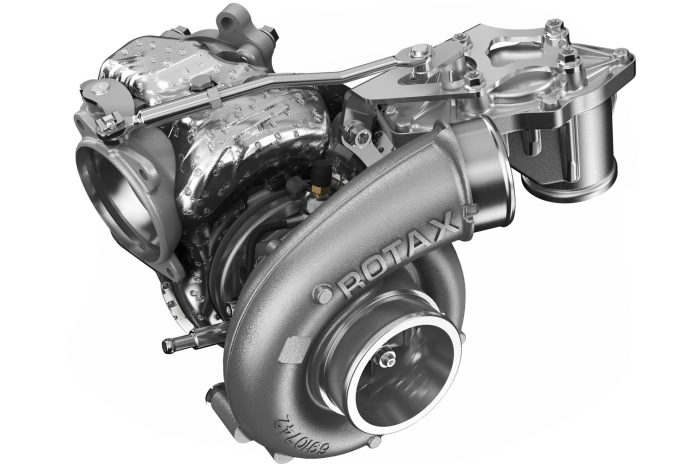The most asked question so far this year is this: “When will Ski-Doo drop the new Summit turbocharged 850 into a trail sled?”
Inasmuch as just mouthing this question in earshot of a factory BRP rep draws a strong denial and a sort-of suggestion they would appreciate it if we didn’t even approach this topic, we think the question deserves an answer!
Let’s take this one piece at a time.
It must be understood the new turbo 850 2-stroke is purpose-built with some limiting issues precluding practical sea level use. Here’s a big one: At any altitude the maximum factory boost and resultant HP the new 850 turbo generates is intended to replace available horsepower, not increase it, as elevation increases.
Here’s what I mean. It’s generally accepted naturally aspirated (non-turbo) 2-strokes lose between three and five percent of their power for every 1000 feet of altitude above sea level. This rudimentary calculation presents an interesting argument. If true, at 10,000 feet elevation there would be no horsepower. Let’s not get into that. The new Rotax 850 turbo does not lose HP as it climbs.
For those who have experienced altitude-induced horsepower loss you know really powerful sleds can feel pretty anemic at altitude.
It’s a simple product of air density. Air is thinner (less oxygen) the higher you climb and less dense air makes smaller explosions when it’s sucked into a cylinder and lit off. However, if you pump air into a cylinder at altitude you can make an engine think it’s at sea level. The Ski-Doo 850 turbo 2-stroke is programmed to do exactly that.
The maximum boost the turbo is allowed to generate will never make the engine produce more than its 165 sea level peak horsepower. So, the Rotax designed and engineered turbo system does not demand more net power from the 850 twin than it would otherwise produce at sea-level.
Okay. You’re thinking that’s all fine and good but why not build a Mach-Z 850 turbo and turn up the boost to produce a nice round horsepower number like, say, 200?
Obviously a sea level 850 Ski-Doo does not need a turbo to produce 165 HP. While I’m convinced a 200 HP Rotax turbo 850 2-stroke could be built, the cost to do so versus the return in sales might not justify it. The 850 twin would likely have to undergo a complete top to bottom beefing up: Rods, crank, pistons and maybe even cases.
Today’s high output, low weight snowmobile engines are built to optimally deliver a specific amount of peak HP reliably. Exceeding the designed output could have a negative effect on reliability.
A complete re-do of the 850 could cost millions and the sales of a trail turbo 200 HP Mach-Z, IMO, may not justify such a move. However, I have been wrong before. That was when I thought I was wrong but it actually turned out I was right.
There is undeniably a contingent of diehard, yellow underwear turbo groupies who are crowing for Ski-Doo to power up what would amount to a new lake shredding “Turbo Mach Z”, fastest production snowmobile. We understand their predisposition for max power. In fact, we might actually agree with them.
The way things look right now, we just don’t see a 850 Turbo Mach Z on the horizon.
However, next time, lets talk about a Rotax 900 4-stroke 200 HP Turbo.








